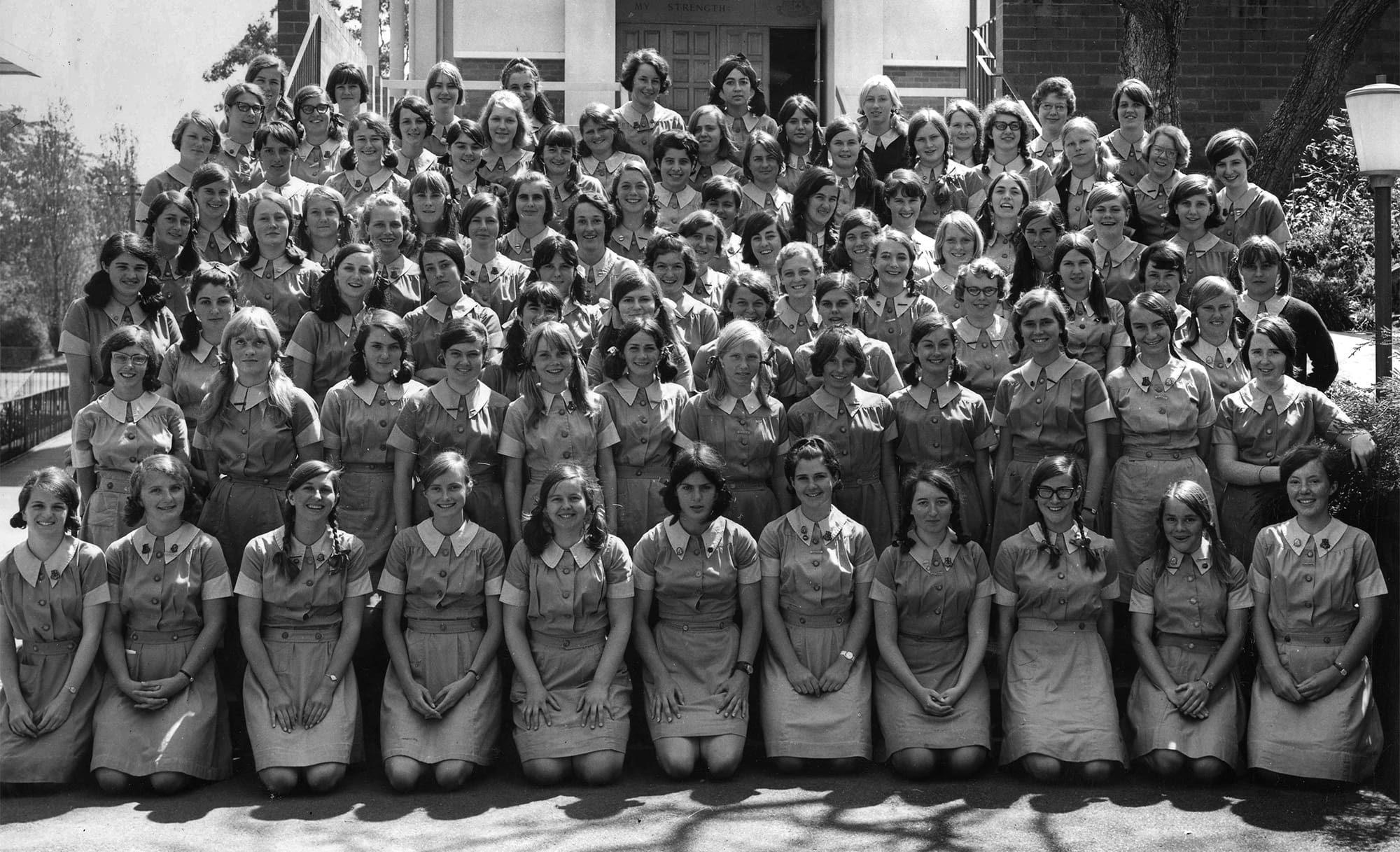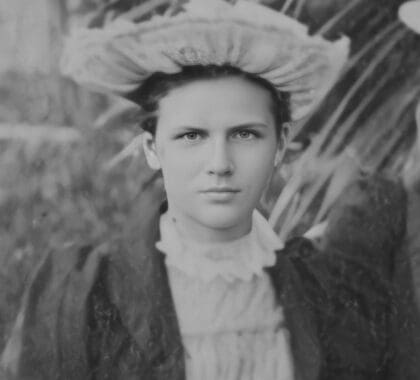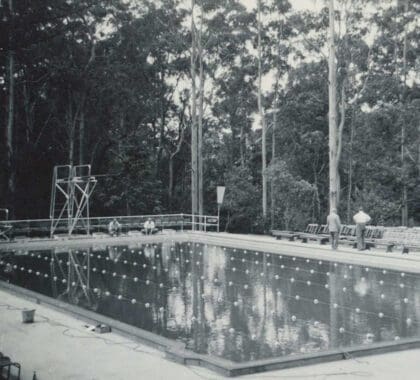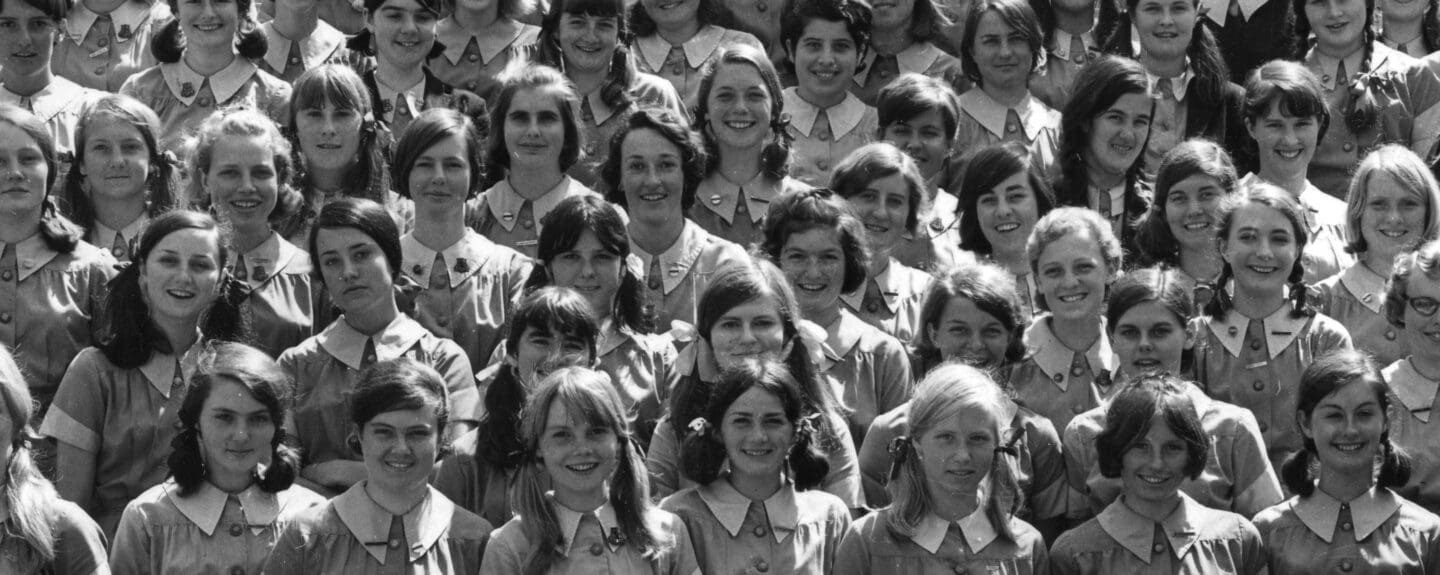The first HSC cohort
Thanks to 1967 leavers Greta Archbold (Brown), Wendy Blaxland, Penny Carnaby (Dawkins), Joanna de Burgh, Moira Dondas (Ferguson), Fran Everingham, Jan Grose (McKay), Helen Hudson (Charlton), Libby King (Davenport), Pauline McMurchie (Bates), Viki Menlove (Turner), Mariamma Mitchell (Judy Peterson), Marion Moran (Martin), Penny Murray (Robbie), Barbara Podger (Pain), Dee Read, Rosemary Signorelli (Johnstone) and Lyndall Stackpool (Hudson) for their valuable contributions to this story.
In 1961, the Wyndham Scheme was approved for introduction in NSW secondary schools in 1962. We were the first year faced with six long high school years stuck in school uniform, not five, and for the first time, some students were actually old enough to drive, drink in a pub and join the armed services but not (yet) to vote!
Wyndham was an exciting government experiment with unfolding ramifications. The old Leaving Certificate finished in 1965, so we found ourselves head of the School in 1966 and 1967. This offered considerably expanded opportunities to participate in rotating leadership roles across houses, clubs, sport, theatre, music and prefect positions.

The new syllabuses were written largely by university professors with grand visions but the writing of text books lagged behind. In Science, the infamous Messel textbook tome didn’t hit our desks until 1964. We faced the School Certificate in 1965, then our HSC exams, with no past papers to practice on. All of us, teachers and students, were flying blind.
This extra year of high school also catapulted teachers and students into a new kind of relationship, since by our final year we were very much young adults. Our teachers grasped this shift and encouraged discussion and engagement beyond the classroom. We attended concerts at the Town Hall and Science forums, saw early computers at IBM and the opening of the Coaxial Cable linking Australia to the world, and sometimes travelled to events on our own.
Matching the change, Commonwealth funding kicked off a massive building spree including a new science and library block, classrooms to house 120 more students, the Chapel and Assembly Hall with stage and music facilities that leveraged musical, orchestral and choral extravaganzas not previously possible. This was a big shift from our Year 7 school assemblies sitting in rows on the gym floor, performing Shakespeare Festivals among the Read House gardens and, for the want of rooms, having some classes on the lawn.
Subject choices were broad. Art, once deemed a soft subject, was recognised for university entry whereas sewing all but disappeared. The school also had to find time for the sports and PE required by the Wyndham syllabus. Who could forget marching around the oval on a winter’s morning after Assembly? We also scored another year of the Tildesley–and an extra year of Lifesaving.
Retrospectively, the 60s was a period of significant social change and it is reasonable to claim the Wyndham Scheme was a timely shift that served us well to tackle these uncharted waters. At Abbotsleigh we were of course also blessed with an extraordinary headmistress. Intellectually formidable and fearless in the face of controversy, Betty Archdale knew how to navigate change. Importantly, she understood the zone of ambiguity in which we found ourselves by Year 12–young adults, but still at school. She grasped the defining controversies of those times: the Vietnam War, conscription, student activism, sexual liberation, contraception, and the psychedelic counterculture and excited our participation in the big debates long before we left the premises!
Not all girls stayed for Year 12, since the HSC was intended to gear students for university. For others the shift to six years simply felt too long. For many of our families the unexpected impost of another full years fees was quite a financial strain. As for us–the guinea pigs–we were part of something quite unique and continue to value the trajectory we found ourselves on.




